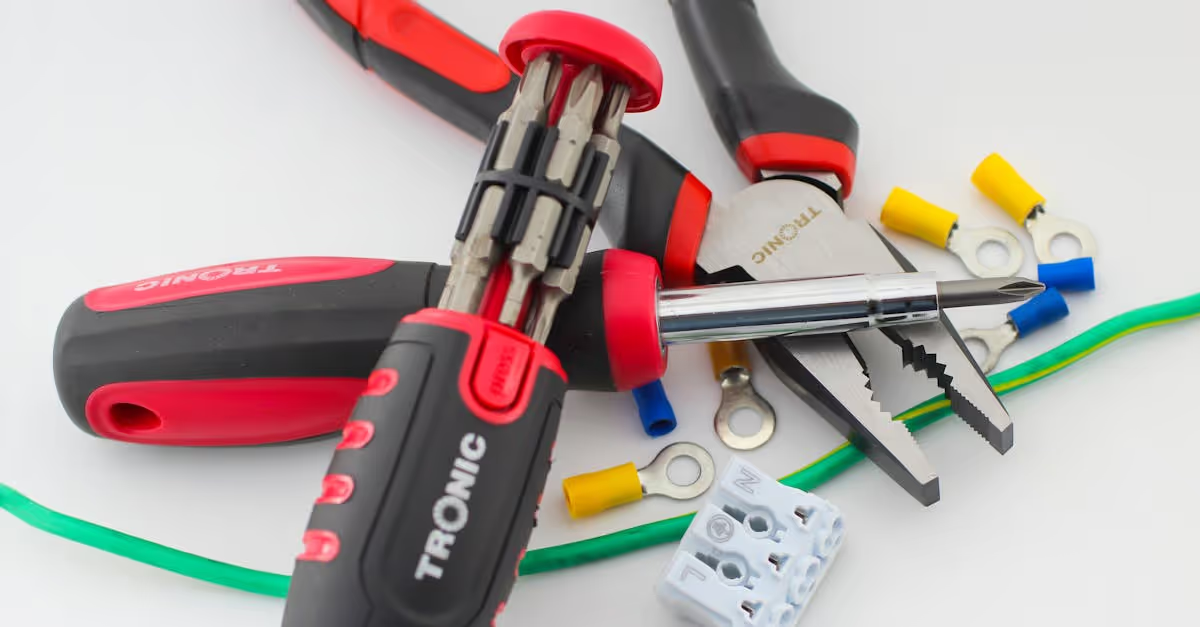Key Takeaways
- Understand Pool Cover Types: Familiarize yourself with the four main types of pool covers—mesh, solid, safety, and solar—to choose one that fits your needs and budget.
- Recognize Signs of Wear: Regularly evaluate your pool cover for signs of damage such as cracks, stiffness, and frayed edges to decide whether repairs are needed or if a replacement is imminent.
- Consider Age: Pool covers typically last 5 to 10 years; knowing your cover's age can influence your decision to repair or replace based on its condition and effectiveness.
- Evaluate Costs: Weigh repair costs ($50 to $150) against replacement expenses ($300 to $1,000+) to determine the most cost-effective option for maintaining your pool cover.
- Long-Term Savings: Maintaining or repairing your cover can reduce water and chemical costs by up to 70%, making it a financially savvy choice that also enhances pool safety and cleanliness.
As pool owners, we know how vital a good pool cover is for maintaining water quality and safety. Did you know that a well-maintained pool cover can save us up to 70% on water and chemical costs? However, deciding whether to repair or replace our pool cover can be tricky, especially if it's showing signs of wear and tear.
Understanding the condition and age of our pool cover is crucial in making this decision. With covers typically lasting between 5 to 10 years, knowing when to invest in a replacement can save us money in the long run. In this article, we’ll explore key tips to help us assess our pool cover's state and make the best choice for our needs.
Understanding Pool Covers
Pool covers play a crucial role in keeping our pools clean and safe. Knowing their types, benefits, and how they interact with wear and tear helps us make informed choices when considering repairs or replacements.
Types of Pool Covers
We can categorize pool covers into four main types:
- Mesh Covers – These allow water to drain but block sunlight and debris. They’re great for winter use.
- Solid Covers – These offer complete protection, keeping out both water and debris. However, they can pool water on top, requiring maintenance.
- Safety Covers – Designed for safety, these can support weight and prevent accidental falls while blocking debris.
- Solar Covers – These trap heat and keep the water warm. They’re lightweight and easy to remove but less durable than other types.
Choosing the right type depends on our needs, climate, and budget. Consider how often our pool gets used and the level of maintenance each cover requires.
Benefits of Pool Covers
Pool covers offer many advantages that enhance our swimming experiences and simplify maintenance:
- Water Conservation – A well-fitted cover can reduce evaporation by up to 95%, saving us on water bills.
- Chemical Savings – Covers help retain chemicals, cutting down on what we use by about 70%. That's nice, especially for budget-conscious homeowners.
- Safety – Covers act as a barrier, keeping children and pets safe from accidental falls.
- Lower Maintenance – Covers limit debris accumulation, reducing cleaning time and effort.
Investing in a quality pool cover can pay off in the long run. Let’s think about how choosing the right cover can streamline our maintenance routine and enhance our enjoyment in the water.
Assessing Condition of Pool Covers
Evaluating the state of a pool cover is vital for making informed repair or replacement decisions. Regular checks will help us catch issues early, saving money and effort in the long run.
Signs of Wear and Tear
We're all familiar with that dreaded moment when we discover our pool cover isn't quite what it used to be. Look for visible signs of wear and tear. Watch for cracks, peeling, or weak spots, as these suggest impending leaks. If the fabric feels stiff or brittle, it's likely past its prime. Instead of waiting for a rainy day (literally!), spot-check regularly—this simple practice could extend the life of our cover significantly.
Common Damage Types
Several common damage types affect pool covers and can influence our choices. Hardware issues often arise from rust or corrosion, particularly in regions with high humidity. Straps that are torn or frayed can compromise safety, as a secure cover is essential to prevent accidents. Similarly, closely examine the stitching and webbing; any fraying can lead to larger problems. Knowing these common pitfalls helps us assess whether a quick fix will suffice or if it's time to invest in a new cover. Let's keep our pools safe, inviting, and ready for action.
Evaluating the Age of Your Pool Cover
We assess the age of a pool cover to decide whether repair or replacement makes the most sense. Pool covers typically last from 5 to 10 years, depending on their material, usage, and exposure to the elements. A cover approaching the 10-year mark may not offer the same protection as it once did, which calls for a closer look.
Average Lifespan of Different Covers
- Vinyl Pool Covers: Thick vinyl options can last up to 10 years with proper care. By shielding them from the sun and harsh chemicals, we maximize their lifespan. In contrast, thinner vinyl covers can deteriorate quickly, lasting only 1 to 3 years due to brittleness from sun exposure.
- Mesh Pool Covers: Mesh covers shine with their potential longevity, often lasting over 10 years. Their resistance to tearing and brittleness makes them valuable for pool safety.
Factors Influencing Longevity
Several factors impact how long a pool cover lasts. The exposure to sunlight greatly contributes; covers left in direct UV rays degrade faster than those in shaded areas. Maintenance habits also play a role; regular cleaning and inspections help catch issues before they grow worse. Additionally, the climate affects wear and tear. In wetter areas, moisture can cause mildew, while extreme temperatures can lead to material fatigue.
Understanding these aspects helps us gauge the right time for repair or replacement. How often do we check the condition of our covers? By staying aware, we can keep our pools safe and inviting for family and friends.
Cost Considerations
Cost plays a significant role in deciding whether to repair or replace a pool cover. We tackle the financial aspects to help make an informed decision.
Repair vs. Replacement Costs
Repairing a pool cover often comes with a lighter financial burden. Minor damages like small tears or loose straps can typically be fixed without breaking the bank. Standard repair costs range from $50 to $150, depending on the extent of the damage. However, extensive damage, like large holes or significant tears, usually necessitates a replacement. Replacing a pool cover can set us back anywhere from $300 to $1,000 or more, depending on the type and size of the cover. We should weigh repair and replacement costs against the age and condition of the cover to determine the most economical choice.
Long-Term Financial Impact
Assessing long-term financial effects can illuminate the better option. Properly maintaining and repairing a pool cover can extend its lifespan, which typically ranges from 5 to 10 years, reducing the need for frequent replacements. Regular repairs can save us money over time, especially considering a well-maintained cover can decrease water and chemical costs by up to 70%. A solid cover benefits not just our wallets, but also enhances energy efficiency by maintaining water temperature. Before we make a decision, let’s consider how each option aligns with our budget in the long run.
Making the Decision
Deciding whether to repair or replace a pool cover involves several key factors. Understanding the cover's condition and age helps us make informed choices.
When to Repair
Minor issues often lend themselves to quick fixes. Small rips or tears under 6 inches can typically be repaired with moisture-resistant tapes or specific patch kits. For solid pool covers, these solutions work well and allow for easy fixes. Frayed edges, minor holes, and damaged straps or grommets represent other areas ripe for repair. Owners can often tackle these issues themselves or call in a professional technician who specializes in pool maintenance.
Repairing a pool cover presents a cost-effective solution. If the cover is relatively new, this option saves money and keeps waste to a minimum. Standard repair costs range from $50 to $150, offering a budget-friendly alternative to purchasing a new cover. Regular maintenance checks help catch minor problems before they escalate, creating savings in the long run.
When to Replace
Extensive damage or age often warrants a replacement. Signs that suggest this include significant rips, fabric brittleness, or substantial wear. A cover older than 10 years might struggle to provide adequate safety or protection for the pool. Replacement cost typically varies between $300 to $1,000 or more, reflecting the investment’s importance in maintaining pool quality.
A cover's lifespan can shift based on various factors, such as material type, usage, and environmental exposure. If most repairs become routine and the age nears the upper limit, investing in a new cover may be the smarter choice. Long-term, a new pool cover contributes to energy efficiency and reduces maintenance costs, paying for itself with the savings generated over time.
Conclusion
Deciding whether to repair or replace our pool cover is crucial for maintaining both safety and cost efficiency. By assessing the cover's condition and age we can make informed choices that align with our needs and budget. Regular inspections help us catch potential issues early and avoid unnecessary expenses.
Understanding the specific requirements of different cover types further empowers us to select the best option for our pool. Whether we opt for a repair or a replacement investing in a quality pool cover will ultimately enhance our swimming experience and ensure our pool remains a safe and inviting space for everyone.
Frequently Asked Questions
What is the importance of a good pool cover?
A good pool cover is essential for maintaining water quality and safety. It can reduce water and chemical costs by up to 70%, keep debris out, and enhance safety for children and pets.
How long do pool covers typically last?
Pool covers generally last between 5 to 10 years, depending on factors like material, usage, and exposure to the environment. Regular maintenance can extend their lifespan.
When should I repair or replace my pool cover?
If your pool cover shows minor damage, such as small rips or tears, it may be worth repairing. However, extensive damage or age might necessitate a replacement.
What are the different types of pool covers available?
There are four main types of pool covers: mesh, solid, safety, and solar covers. Each type has unique benefits and is suitable for various user needs and climates.
What are the signs of wear in a pool cover?
Visible signs of wear include cracks, peeling, weak spots, and brittleness. Hardware issues like rust or torn straps also indicate the cover may need attention.
How much does it cost to repair a pool cover?
Repair costs for pool covers usually range from $50 to $150 for minor damages. The overall cost can vary based on the extent of the damage.
What factors affect the lifespan of a pool cover?
Factors influencing a pool cover's longevity include sunlight exposure, maintenance habits, material quality, and overall climate conditions.
How do pool covers help in saving costs?
Pool covers can save money by reducing water evaporation, minimizing the use of chemicals, lowering maintenance costs, and enhancing energy efficiency.






